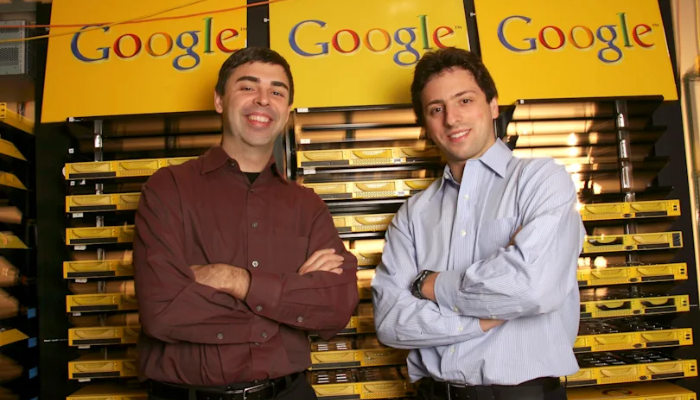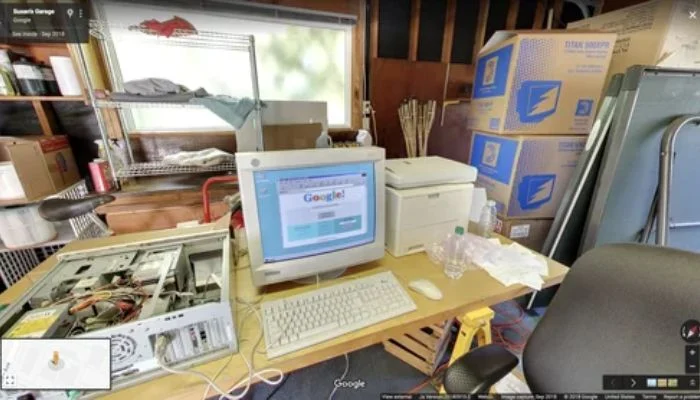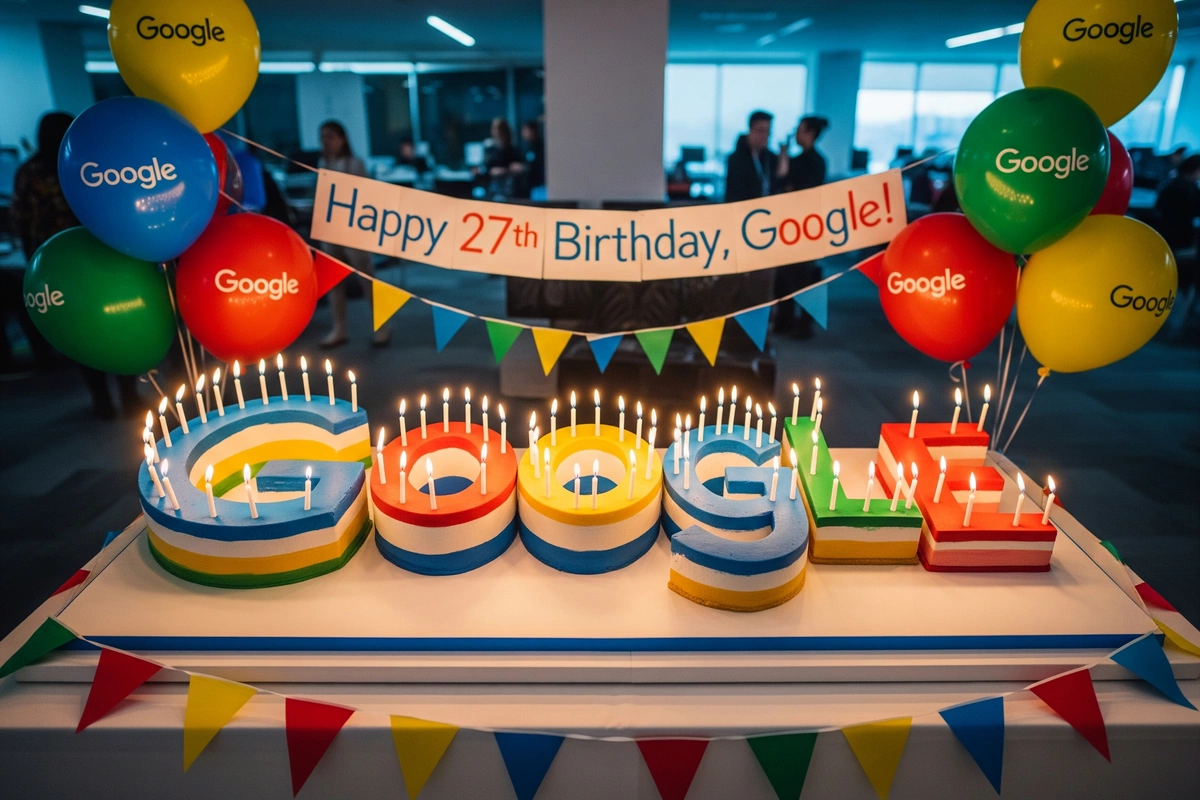Global tech giant Google marked its 27th birthday on September 27, 2025, celebrating nearly three decades of organizing the world’s information. Though the company was officially founded on September 4, 1998, it has symbolically adopted September 27 as its anniversary. The choice is linked to Google’s earliest birthday “Doodle” and an important milestone in the number of indexed web pages.
This year, the centerpiece of the celebration was a special Google Doodle featured on the homepage. In a nostalgic twist, Google revived its very first logo from 1998. The official message read: “Today’s Doodle marks Google’s 27th birthday. Thank you for searching with us throughout the years!” The celebration reminds us of Google’s foundational mission set by co-founders Larry Page and Sergey Brin: “to organize the world’s information and make it universally accessible and useful.”
Google’s Real Beginning: BackRub to Google

Before becoming a global powerhouse, Google began as a Stanford research project. Larry Page and Sergey Brin initially called it BackRub. In its first year, the engine processed about 10,000 searches daily. By 2025, it handles over 13.6 billion searches every day — nearly 5 trillion annually worldwide.
The name “Google” came from a playful misspelling of googol, a mathematical term meaning 1 followed by 100 zeros. It symbolized the massive volume of data the search engine would process. This unique name quickly became synonymous with online searching and innovation worldwide.
Google — the full early history
1) Origins: two grad students and a big idea (1995–1996)
- Where it began: Larry Page and Sergey Brin met in 1995 at Stanford University’s Computer Science graduate program. Though they clashed at first, they quickly discovered shared interests in data mining, information retrieval, and web structure.
- The problem they wanted to solve: The mid-1990s web was exploding, and search engines ranked pages mostly by keyword matching and simple metrics. Page and Brin asked: how can we rank pages by their actual importance? Their insight: links between pages are signals of value — a page linked-to by many others is often more important.
- PageRank: They formalized this intuition into a mathematical algorithm called PageRank, which treated links as votes and computed importance via an iterative eigenvector computation. PageRank wasn’t the whole search engine, but it became the core ranking signal that made Google’s results consistently more useful than contemporaries.
2) BackRub: the research prototype (1996–1997)
- Name and prototype: The project initially ran under the name BackRub (it analyzed backlinks). They built a crawler to fetch web pages and an index that stored the link graph and content.
- Technical novelty: Rather than using huge, expensive servers, Page and Brin used clusters of inexpensive commodity machines and distributed algorithms to crawl and index the web. Their approach emphasized efficiency and relevance.
- Early demo and traction: As the prototype improved, it returned better results than popular search engines of the time (e.g., AltaVista, Lycos), which caught attention inside Stanford and among early users.
3) From BackRub to Google — name and domain (1997)
- The name: The founders wanted a name that reflected organizing massive quantities of information. They chose “Google” — a play on the mathematical term googol (1 followed by 100 zeros) — symbolizing the scale of information they aimed to index. (The domain google.com was registered in 1997.)
- Trademark and identity: That playful misspelling stuck and became a brand synonymous with searching the web.
4) Incorporation and very early funding (1998)
- Incorporation: Google was officially incorporated on September 4, 1998. The company’s earliest office was a garage in Menlo Park, California (the garage was rented from Susan Wojcicki, who later became an early Google employee and long-time executive).
- First check: A pivotal moment: Andy Bechtolsheim (Sun Microsystems cofounder) wrote a $100,000 check to an entity that didn’t yet formally exist after seeing an early demo. That check provided the first seed capital.
- First hires: Craig Silverstein became Google’s first employee. The team grew slowly from a PhD project into a small startup.
5) Building a superior search engine (1998–2000)
- Product focus: From Day 1 Google emphasized relevance, speed, and a clean interface—no cluttered portals or heavy advertising on the homepage.
- Back-end engineering: They built large-scale crawlers and indexers, and designed the system to scale. Concepts that later became mainstream (distributed storage, horizontal scaling, fault tolerance) were part of their early engineering thinking.
- Search as utility: By focusing relentlessly on search quality, Google grew through word of mouth and academic credibility.
6) The business model problem — and AdWords (2000)
- No immediate revenue: For the first years Google prioritized user experience, not monetization. That changed as scale increased.
- AdWords launch: In 2000 Google launched AdWords — a self-service advertising program initially based on CPM (cost per mille) and later transitioning to pay-per-click auctions. AdWords allowed advertisers to bid on keywords and reach users with intent-based queries. This innovation became the core of Google’s revenues and reshaped online advertising.
7) Early hires and leadership changes (2001)
- Eric Schmidt: In 2001 Google hired Eric Schmidt as CEO to provide managerial experience and business discipline while Page and Brin remained focused on products and technology. Schmidt’s tenure stabilized operations and prepared Google for rapid growth.
- Company culture: Even with professional management, Google kept an engineering-driven culture — small teams, emphasis on data, experimentation (A/B testing), and a quirky, open workplace.
8) Product expansion and acquisitions (2001–2006)
Google began branching out from search into multiple products and important acquisitions:
- Google Toolbar (2000): Made search accessible from browsers and increased search usage.
- Google News (2002): Automated news aggregation organized by algorithms.
- Acquisitions that mattered early:
- Applied Semantics (2003) — technology that evolved into AdSense, enabling contextual ads on third-party sites.
- Pyra Labs / Blogger (2003) — helped Google enter social/content publishing.
- Gmail (2004): Launched with a then-massive offering of free storage (1GB) and a fast, search-like interface — it changed expectations for webmail.
- Google Maps (2005): Combined mapping data, tile-based interfaces, and AJAX to create a fast, interactive map experience — transforming navigation and local search.
- Android acquisition (2005): Google acquired Android Inc., a move that set the stage for mobile dominance. Android later became the world’s most widely used smartphone platform.
- YouTube (2006): Google acquired YouTube for roughly $1.65 billion — a blockbuster purchase that made Google the dominant force in online video.
9) IPO and scaling up (2004)
- Public offering: Google went public on August 19, 2004, raising $1.67 billion. The IPO used a Dutch auction process and launched Google onto the public markets.
- Resulting growth: IPO funds helped Google expand data centers, hire engineers, and pursue acquisitions and experiments.
10) Technical infrastructure and research (early 2000s)
- MapReduce & BigTable (mid-2000s): Google developed internal systems — MapReduce (programming model) and BigTable (distributed database) — to handle massive data processing and storage needs. These systems were later influential in the wider industry (and inspired open-source equivalents like Hadoop).
- Data centers: Google built globally distributed, highly efficient data centers to host search indexes, Gmail, and later cloud services. Efficiency, redundancy, and scale were a core competitive advantage.
11) Culture, values, and the “Don’t be evil” motto
- Engineering culture: Flat structures, perks (free food, playrooms), and a belief in data-driven decision making defined the workplace and helped attract talent.
- “Don’t be evil”: This informal motto (later codified and debated) reflected an early aspiration to place users’ interests at the center — though later years brought disputes about how well this ideal matched reality.
12) Early controversies and policy challenges
- Privacy questions: As Google started to aggregate massive user data (search logs, email, location), questions about privacy, data use, and user consent emerged early and persisted.
- Content & copyright: With services like YouTube, Google navigated takedown requests, copyright disputes, and content-moderation policies.
- Competition & regulators: As Google’s market dominance grew (search, advertising), so did scrutiny from competitors and regulators — seeds of later antitrust debates were planted in these early decades.
13) From search company to technology platform (2006–2010)
- Ecosystem building: By the end of the 2000s Google had evolved into a platform company: search + advertising + mobile OS (Android) + video (YouTube) + productivity apps (Docs, Sheets).
- R&D projects: Google invested in moonshots — self-driving cars (Waymo), health tech (Verily), and other long-term research under the Google X umbrella (later X, the moonshot factory).
14) Key people you should know (early era)
- Larry Page & Sergey Brin: Co-founders, PhD students who stayed deeply involved with product and vision.
- Eric Schmidt: Early CEO who brought managerial experience and helped scale the company.
- Susan Wojcicki: Hosted Google’s first office in her garage, later an early employee and long-time executive (head of YouTube).
- Craig Silverstein: Google’s first hire and early technical leader.
- Marissa Mayer: Early product manager and one of Google’s first designers of the search interface and other products.
15) Why the early innovations mattered
- Better search results: PageRank and superior indexing made Google the default gateway to the web.
- Ad model that funded growth: AdWords and AdSense created a profitable, scalable business model without degrading search quality.
- Platform thinking: By building APIs, developer tools, and acquiring platforms (Android, YouTube), Google positioned itself as an ecosystem rather than a single product company.
- Engineering culture & infrastructure: Scalable systems and data-driven product development allowed rapid innovation across many domains.
Timeline recap — key dates (early years)

- 1995: Page and Brin meet at Stanford.
- 1996: BackRub project begins.
- 1997: Domain google.com registered (name chosen).
- September 4, 1998: Google incorporated.
- 1998: Andy Bechtolsheim’s $100,000 seed check; first office (Menlo Park garage).
- 2000: AdWords launched.
- 2001: Eric Schmidt joins as CEO.
- 2003: Acquisitions like Applied Semantics; AdSense evolves.
- 2004: Gmail (April 1 launch), Google IPO (August 19, 2004).
- 2005: Google Maps; Android acquisition.
- 2006: YouTube acquisition.
- 2008–2010: Android smartphones proliferate; Google expands internationally and invests heavily in data centers and AI research.
Google’s 27th Birthday Doodle: A Nostalgic Tribute
The 27th birthday doodle in 2025 brought back Google’s very first logo. This retro design connected users with the company’s humble beginnings, even as it pushes into futuristic fields like AI and robotics. Google’s birthday doodles have become fan favorites, offering a personal touch to corporate milestones. This year’s celebration reminded people how far the company has come since its garage days.
Why September 27?

Although incorporated on September 4, 1998, Google celebrates on September 27. The date corresponds with one of the first doodles, an “out of office” vacation message by Larry and Sergey, and a record-breaking index update. Over time, September 27 became the official day to reflect on its growth from a garage startup to a company worth over $3 trillion.
How Google Changed Our World in 27 Years
- Access to Knowledge – Google Search made information instantly available.
- Digital Advertising – AdWords reshaped how businesses market online.
- Global Communication – Gmail, Meet, and Workspace revolutionized productivity.
- Navigation Made Easy – Google Maps changed how we travel.
- Video Dominance – YouTube created a new media culture.
- Mobile Revolution – Android made smartphones accessible worldwide.
- AI Everywhere – From Google Translate to Assistant, AI redefined interaction.
- Cloud Computing – Google Cloud supports enterprises globally.
- Innovation Beyond Tech – Waymo, Verily, and sustainability projects point to Google’s broader mission.
Faqs About Google changed our world in 27 years
Why is Google’s birthday celebrated on September 27?
Although it was incorporated on September 4, Google celebrates on September 27 because of a record-breaking index milestone and its first doodle tradition.
When was Google founded?
Google was officially founded on September 4, 1998, by Larry Page and Sergey Brin in Menlo Park, California.
What inspired Google’s name?
The name came from a misspelling of googol, representing the vast amount of information the search engine aimed to organize.
Who owns Google today?
Google is owned by Alphabet Inc., its parent company since 2015.
Final Thoughts
Google’s 27th birthday isn’t just a celebration of longevity. It’s a reflection on how a small university project became one of the world’s most powerful companies.
From BackRub to Google Search, from a garage to global dominance, the journey shows how vision and technology can change the world.
The revival of its first logo in 2025 was more than nostalgia — it was a reminder of humble beginnings and extraordinary growth.
For more global tech insights, visit The National Frontier.





